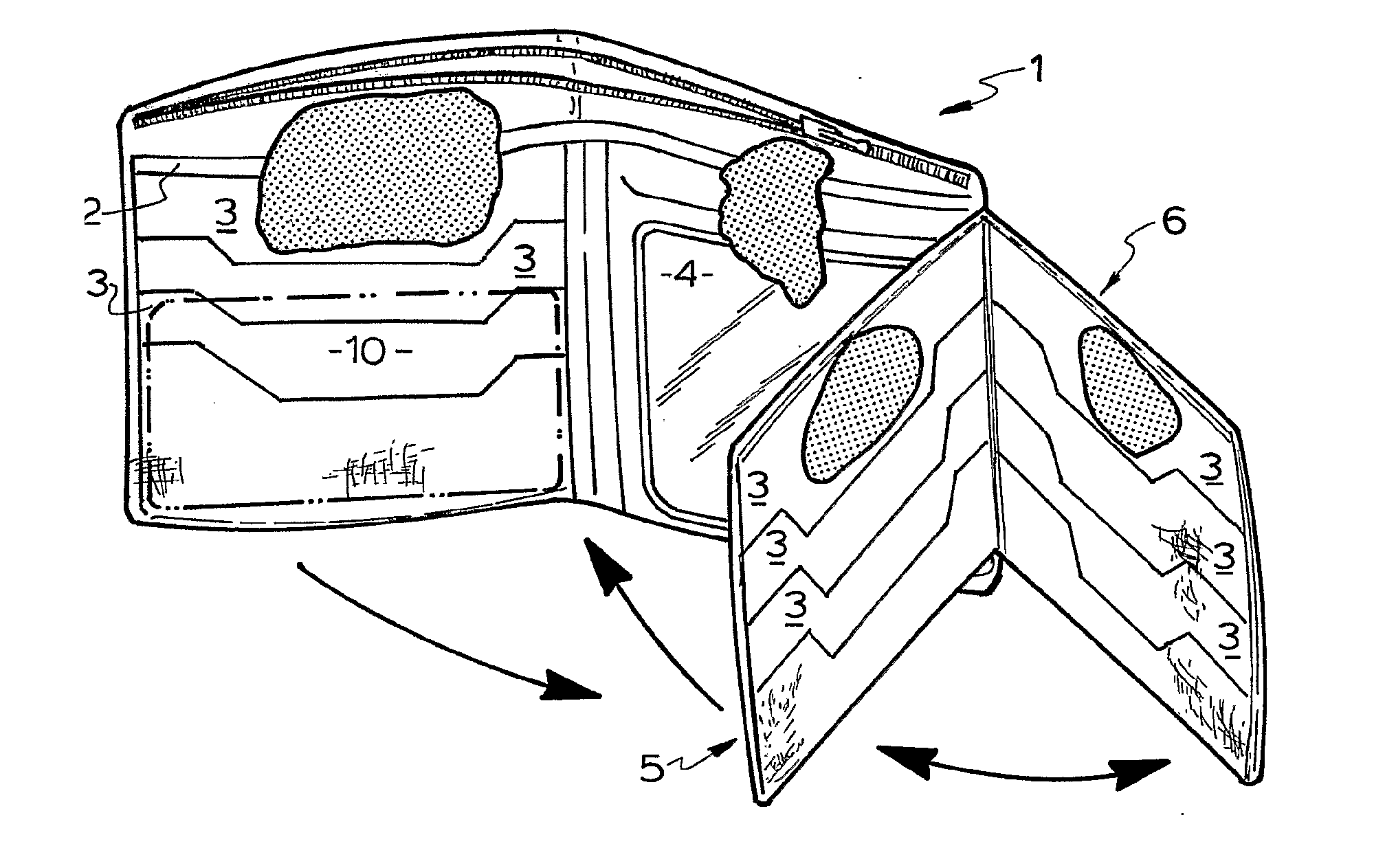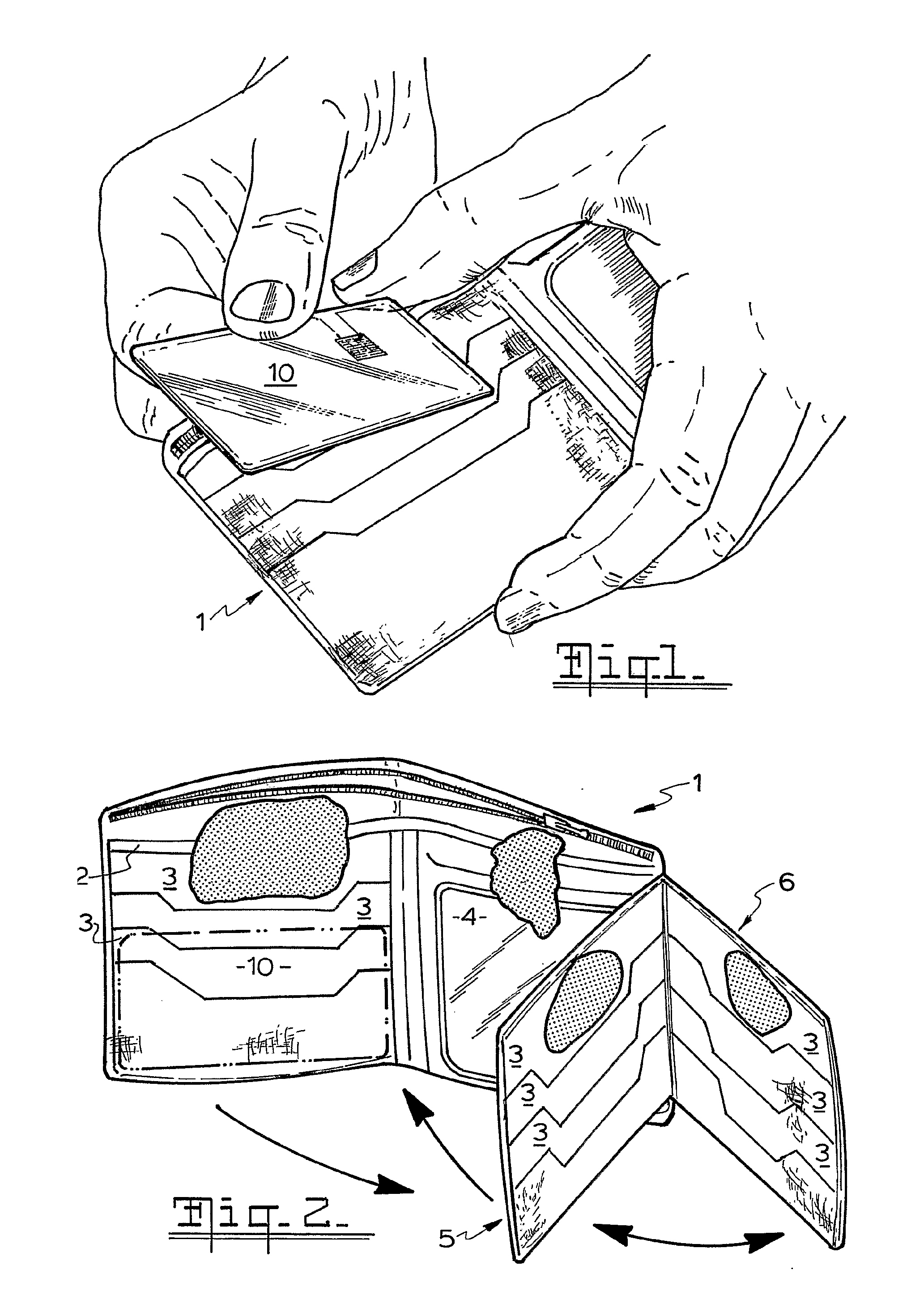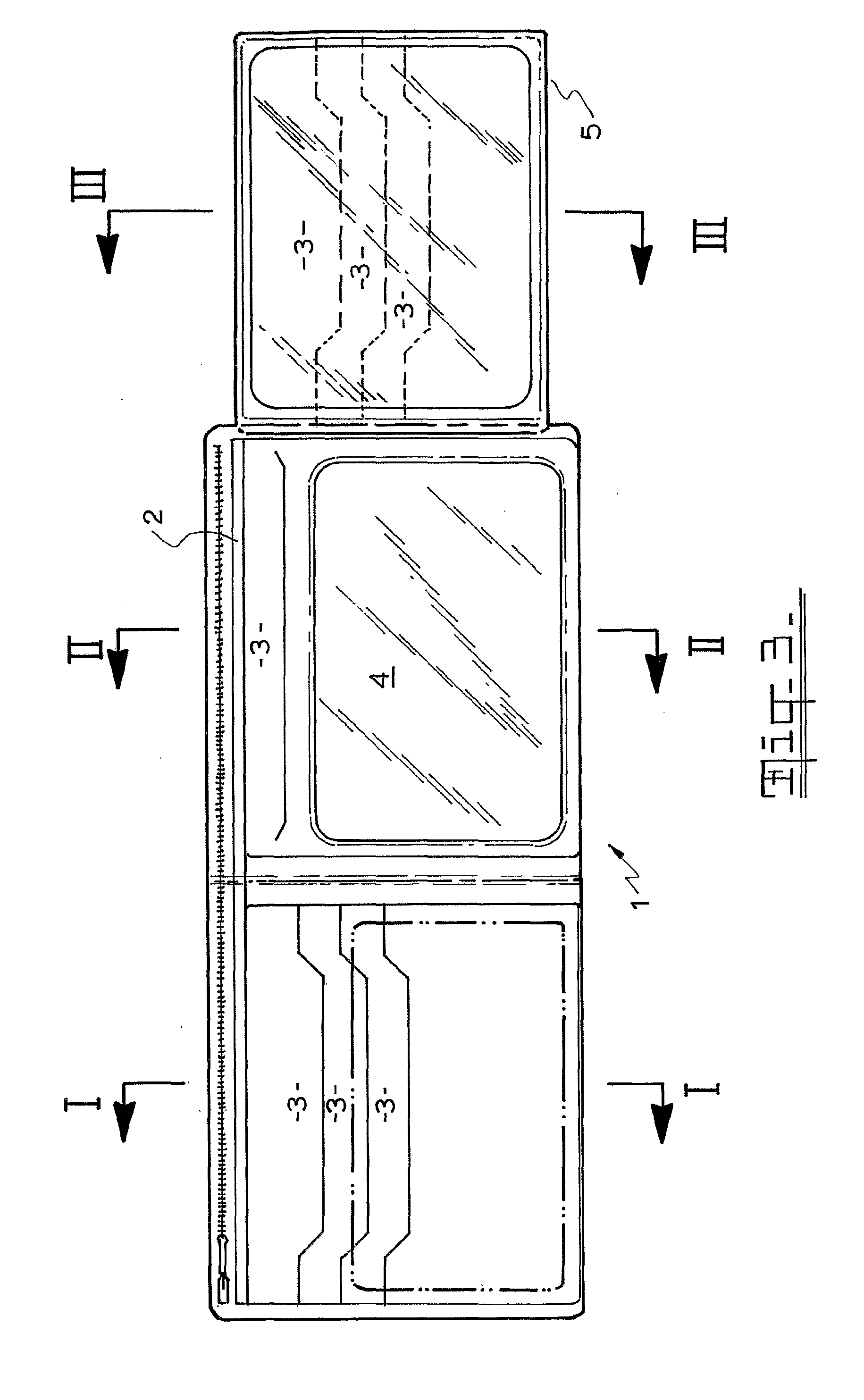Carrying Devices for Rf Tokens
a technology of carrying devices and tokens, applied in the field of carrying devices, can solve the problems of less sophisticated rfid chips, chip no more than providing a means, and negative environmental impa
- Summary
- Abstract
- Description
- Claims
- Application Information
AI Technical Summary
Benefits of technology
Problems solved by technology
Method used
Image
Examples
Embodiment Construction
[0037]FIGS. 1 and 2 illustrate a leather wallet 1 which has multiple compartments for holding bank notes, 2, cards 3, and photographs 4. In addition it has, hinged on the right side, two panels 5, 6 which can fold out when wallet 1 is open. Panels 5, 6 also have slots 3 to hold cards.
[0038]FIG. 4 shows in cross section the construction of the left hand section of wallet 1. Outer skin 7 forms a compartment with the body of wallet 1 and is zipped to it by zip 8. This compartment is lined with aluminium foil liner 9 which shields the contents of the closed wallet against electromagnetic radiation. This section also has compartment 2 to hold bank notes and compartments 3 to hold cards.
[0039]FIG. 5 shows in cross section a continuation of this construction in the right hand section of wallet 1 where the continuation of outer skin 7 again forms a compartment with the body of wallet 1 and is zipped to it by zip 8. This compartment is also lined with the continuation of aluminium foil liner...
PUM
 Login to View More
Login to View More Abstract
Description
Claims
Application Information
 Login to View More
Login to View More - R&D
- Intellectual Property
- Life Sciences
- Materials
- Tech Scout
- Unparalleled Data Quality
- Higher Quality Content
- 60% Fewer Hallucinations
Browse by: Latest US Patents, China's latest patents, Technical Efficacy Thesaurus, Application Domain, Technology Topic, Popular Technical Reports.
© 2025 PatSnap. All rights reserved.Legal|Privacy policy|Modern Slavery Act Transparency Statement|Sitemap|About US| Contact US: help@patsnap.com



